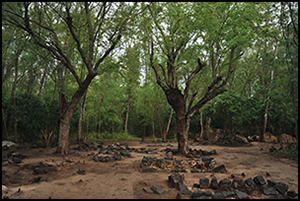Crossref Citations
This article has been cited by the following publications. This list is generated based on data provided by
Crossref.
Wilson, Brian C.
and
Hauser, Mark W.
2016.
Toward a South Asian Historical Archaeology.
Historical Archaeology,
Vol. 50,
Issue. 4,
p.
7.
Finneran, Niall
2016.
Slaves to Sailors: the archaeology of traditional Caribbean shore whalingc.1850-2000. A case study from Barbados and Bequia (St Vincent Grenadines).
International Journal of Nautical Archaeology,
Vol. 45,
Issue. 2,
p.
388.
Mungur-Medhi, Jayshree
2016.
The Reconstitution of Aapravasi Ghat, a Nineteenth-Century Immigration Depot in the Capital City of Port Louis, Mauritius, through Archaeology.
International Journal of Historical Archaeology,
Vol. 20,
Issue. 4,
p.
781.
Seetah, Krish
Fregel, Rosa
Haines, Julia
Calaon, Diego
and
Čaval, Saša
2017.
Archéologie des migrations.
p.
329.
Seetah, Krish
Birch, Thomas
Calaon, Diego
and
Čaval, Saša
2017.
Colonial iron in context: the Trianon slave shackle from Mauritius.
Archaeological and Anthropological Sciences,
Vol. 9,
Issue. 3,
p.
419.
Haines, Julia Jong
2018.
Landscape Transformation under Slavery, Indenture, and Imperial Projects in Bras d’Eau National Park, Mauritius.
Journal of African Diaspora Archaeology and Heritage,
Vol. 7,
Issue. 2,
p.
131.
Rødland, Henriette
Wynne-Jones, Stephanie
Wood, Marilee
and
Fleisher, Jeffrey
2020.
No such thing as invisible people: toward an archaeology of slavery at the fifteenth-century Swahili site of Songo Mnara.
Azania: Archaeological Research in Africa,
Vol. 55,
Issue. 4,
p.
439.
Lightfoot, Emma
Čaval, Saša
Calaon, Diego
Appleby, Jo
Santana, Jonathan
Cianciosi, Alessandra
Fregel, Rosa
and
Seetah, Krish
2020.
Colonialism, slavery and ‘The Great Experiment’: Carbon, nitrogen and oxygen isotope analysis of Le Morne and Bois Marchand cemeteries, Mauritius.
Journal of Archaeological Science: Reports,
Vol. 31,
Issue. ,
p.
102335.
Douglass, Kristina
and
Cooper, Jago
2020.
Archaeology, environmental justice, and climate change on islands of the Caribbean and southwestern Indian Ocean.
Proceedings of the National Academy of Sciences,
Vol. 117,
Issue. 15,
p.
8254.
Cianciosi, Alessandra
2023.
The Landscapes of Disease and Death in Colonial Mauritius.
International Journal of Historical Archaeology,
Rasolondrainy, Tanambelo
2024.
Encyclopedia of Archaeology (Second Edition).
p.
116.



